

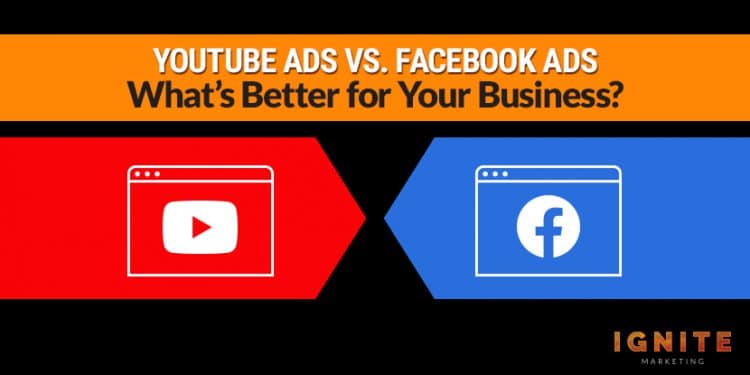
“Be seen where everyone is watching.”
That’s the main headline on Youtube’s marketing page for its advertising service.
And it’s true ‒ Youtube is the second most-visited website on the planet, with more than 2 billion monthly users spending a daily average of 8 minutes and 55 seconds on the site. If you advertise on YouTube, you’re putting your product or service in front of the entire world.
The only real competitor to Youtube in terms of reach and accessibility is Facebook, which is the fourth most-visited website on Earth.
With 2.4 billion monthly users who spend an average of 11 minutes and 53 seconds on the site, Facebook’s overall traffic and engagement numbers make it seem like the better advertising platform on the surface... but is this really the case?
This article will answer that question with a deep-dive comparison between YouTube ads and Facebook ads.
Before we get into the specifics, I want to give a direct answer to the question you came to this article: are Youtube ads or Facebook ads better for your business?
While I wish I could say the answer was simple, it isn’t.
YouTube and Facebook are both excellent advertising platforms with enormous reach.
Deciding which is best for your business is a choice that depends on a bunch of factors. The answer will change depending on your industry, your marketing budget, the size of your business, your target market, and many other factors.
That being said, I do think Facebook ads are better for small businesses than YouTube ads.
First of all, Facebook has sharper microtargeting options than YouTube. You can choose to show your ad to more exact age ranges and more exact geographical locations. It also makes retargeting audiences easier, which is vital for experienced marketers.
Facebook is also a social network, where YouTube is a video aggregation site. Seeing an ad for a local business on Facebook feels more natural than seeing an ad for a local business on YouTube. The inclusion of Business Pages on Facebook also makes it easy for local ad viewers to connect with your business within the familiar ecosystem of Facebook. There’s no need for them go off-site when they can follow your page instead.

Facebook’s advertising platform also offers a variety of ad formats that are optimized for certain marketing objectives. If you’re looking to generate leads, build awareness for your brand, encourage a direct purchase, or something else, Facebook has an ad format designed specifically for that purpose.
To cap it off, a study by SocialBakers found that Facebook videos get 40% more engagement than YouTube videos do. If you want your video to get likes or clicks through to your website, Facebook will be more effective than YouTube.
So if you’re just starting out, I recommend trying Facebook ads first.
However, you shouldn’t count YouTube ads out. Despite my position in the last few paragraphs, YouTube ads are the better option for a number of industries and marketing goals.
Here’s my final advice before we dive into the comparison:
Try both.
You won’t know which advertising platform will work best for your business until you try it out.
So give both Facebook and YouTube a try, and prioritize whichever generates a higher ROI.
Now that my initial recommendation is out of the way, I want to talk about the similarities between the two advertising platforms.
Both YouTube and Facebook have over 2 billion unique monthly users. These users also spend an enormous amount of time on each site. No matter where you’re located or what you’re selling, both platforms have plenty of extremely engaged users who will be interested in your product or service.
Microtargeting is an essential feature of any modern advertising platform. To generate the highest ROI possible, your ads should be directed at your target market ‒ and only your target market.
For example, if a chiropractor in SmallTown, Kansas is running a promotion offering discount treatments to seniors, they will only want to pay for ads that are shown to seniors who live near SmallTown, Kansas.

Anyone who isn’t a senior living near SmallTown, Kansas won’t be interested in the ad. To save money, the chiropractor will want to use microtargeting to finetune the age and location of the people who see the ad.
As I mentioned earlier, Facebook’s microtargeting options are better than YouTube’s. This is one of the biggest reasons I recommend marketing on Facebook over YouTube. YouTube still has great microtargeting capabilities though.
Both YouTube and Facebook have a few different ad formats to choose from, each of which involves different types of media and serves a different purpose.
The types of ads you’ll be running will depend on your budget and available creative resources. No matter where you’re at in your business’s marketing journey, both YouTube and Facebook have you covered.
While all ads are created to inspire people to buy something, there are different sub-goals within that overarching objective.
Some ads are created to generate leads. Others are made to send traffic to your website. And others still are designed to increase awareness of a brand.
Whatever the end goal of your ad is, both YouTube and Facebook let you optimize your ad campaign for that goal.

Why do people use YouTube or Facebook?
The answer will change depending on who you ask ‒ but the majority of users go to these platforms to be entertained. They want to escape from their current surroundings for a bit and watch a funny video or see what their friends have been up to.
Most people aren’t going to these platforms to find a service or buy a product.
This means the intent to purchase on YouTube or Facebook will be lower than, say, ads that target certain Google keyword searches.
It’s true that some people go to YouTube to find video guides on how to do something. The intent to purchase might be higher if your ad helps the viewer solve a problem they’re actively looking for a solution to.
A situation like this is an exception though ‒ most ads on YouTube won’t help solve a problem the viewer is presently having, so intent to purchase will remain quite low.
If you want deep insights into how your ads are performing, both Facebook and YouTube have you covered. They’ll tell you everything you need to know:
So if you’re a data-hungry business owner, don’t worry. Both platforms will give you all of the necessary metrics.
Now that we’ve discussed the similarities between the two platforms, I want to talk about what each platform does best. We’ll start with YouTube.
As much as you might like your video ad, most people YouTube shows it to would rather not watch it. The vast majority are going to skip it as soon as possible, and only a fraction will end up viewing the whole thing.
YouTube is aware that those marketing on their platform don’t want to pay for these skipped ad “views” that aren’t really viewed at all. To compensate for this, YouTube only charges you for an ad when a viewer shows interest.
What does it mean for a viewer to “show interest”?
According to YouTube, there are three ways a viewer can show interest:
This leniency on YouTube’s part ensures you only pay for ad content that actually gets watched.
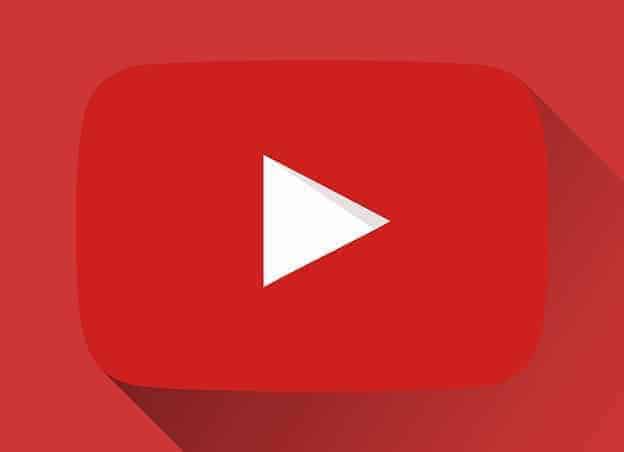
Credit: https://pixabay.com/illustrations/youtube-logo-red-2672571/
If sound is an important part of your video ad, Youtube is the better option.
Because people on YouTube are watching videos, almost all of them will have their sound enabled. Whatever sounds you’ve included in your video ad ‒ whether it be talking, music, or something else ‒ will reach the viewer’s ears.
On the flip side, people on Facebook aren’t usually watching videos. They’re typically scrolling through their news feeds ‒ often in public settings ‒ and many won’t want to turn their sound on to hear a video. If you run a video ad on Facebook, it’s a good idea to add subtitles at the bottom so viewers who watch without sound can still digest your message.
If you have a short video ad that you really want people to see, you can opt to run it as an unskippable ad.
Viewers will have to watch your ad before YouTube shows them their video. Because YouTube viewers want to watch their video, they’re highly motivated to sit through your short 5-15 second ad to get there.
This is a good option for brand awareness, as short and unskippable ads are great for providing passive information without asking the viewer to take a specific action.
When you advertise on Facebook, you also get the chance to advertise on Instagram.
This is huge ‒ Instagram has the highest engagement rates of all social media platforms, and it’s only growing in popularity. The image-and-video-friendly format also makes video advertising on the platform extremely attractive.
This isn’t just my opinion either. The marketing industry as a whole is quickly catching on to how effective video ads on Instagram are.

Credit: https://www.needpix.com/photo/701872/instagram-symbol-logo-photo
According to Wyzowl’s State of Video Marketing 2019 report, 51% of video marketers have used Instagram video as an advertising channel ‒ this is up substantially from the 41% that used it in 2018. And of those marketers, 88% said their marketing efforts were successful.
I don’t know about you, but when 88% of professional marketers say something is working for them, I tend to listen.
According to Wyzowl, 87% of video marketers advertised on Youtube in 2019. This is slightly more than the 84% that advertised on Facebook in 2019.
Here’s the kicker though ‒ 85% of video marketers who used Facebook says it’s been successful for them. This is slightly higher than the 80% who said their YouTube advertising efforts brought them success. And remember, Facebook ads include Instagram ads, where 88% found success in their video marketing efforts.
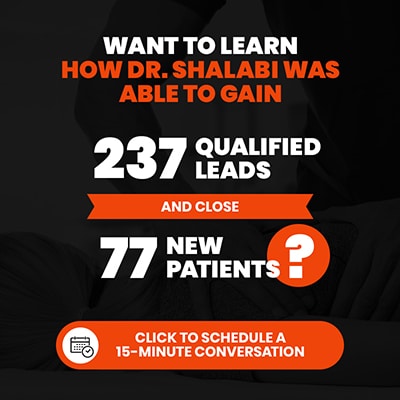
Facebook has nine different ad formats to choose from, while YouTube only has six. Some of these ad formats ‒ like lead ads or dynamic ads ‒ are designed specifically for things like lead generation or targeting a prospect who is pretty far along the sales funnel.
While YouTube’s ad formats can certainly be used for these purposes too, they aren’t specifically designed for them. This can make advertising on Facebook better if you’re doing performance marketing (where you’re actively trying to get leads or purchases) instead of brand awareness.
When you set up a video ad on Facebook, you’ll have three ad delivery optimization choices to choose from:
Depending on your video length and marketing goals, you’ll want to choose different delivery optimization options for different ads. An ad that is under 10 seconds long should probably get the 2-second view. If you want viewers to watch the whole video, ThruPlay is your best best.
Advertising on YouTube is pretty simple. This section will provide a brief overview of the advertising process.
YouTube has three basic ad formats to choose from: video ads, card ads, and banner ads. These formats can be further broken down into six distinct ad types:
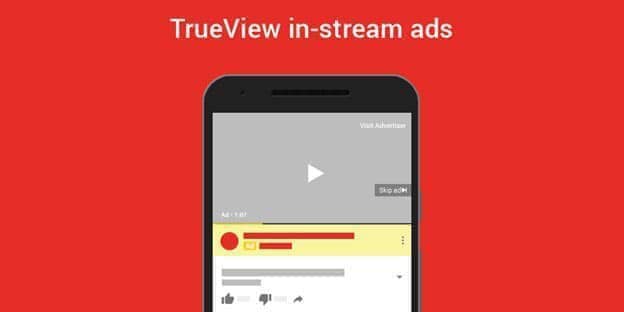
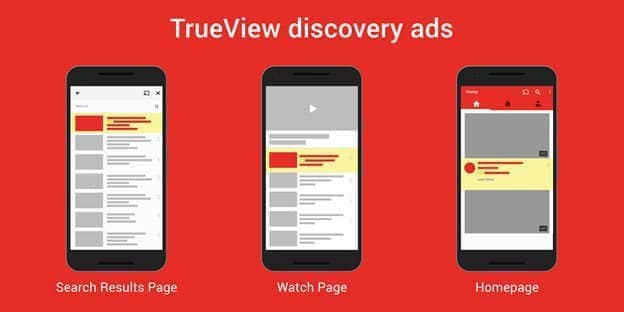
Once you’ve decided on an ad type and created the ad, you can upload the ad to Youtube.
From here, you’ll need to choose your campaign type ‒ you’ll be selecting the Video campaign if you want to advertise on YouTube. You’ll then need to refine your campaign with a few criteria, like the campaign goal, daily budget, and the date range your ad should run.
Once your basic campaign structure has been fleshed out, you’ll need to choose the network in which your ad appears. Many advertisers stick to the YouTube search results and YouTube videos, though branching out to Google’s display network video partners can also provide favorable results. You’ll then need to choose between a few bid type options.
After choosing your networks and configuring the bid type, you’ll need to tell YouTube a bit more about your target market. To ensure you only show ads to interested viewers, YouTube needs to know the following information:
Now that you’ve defined your target market, YouTube needs to know some information about your ad preferences ‒ which search terms you want it to show up for, whether you want it showing before graphic or violent content, and whether you want it excluded from embedded videos, streaming videos, or games.
And that’s the YouTube advertising process in a nutshell. It’s pretty straightforward ‒ as long as you have a clear vision of your target customer, using YouTube’s interface to hone in on your target market is quick and easy.
Advertising on Facebook is also pretty simple, although the larger number of advertising options can make things a bit more confusing at the start.
There are nine ad types on Facebook to choose from.
Once you choose your ad type and create the ad, it’s time to set up the campaign.
The first thing Facebook wants to know is what your marketing objective is. This could be brand awareness, website traffic, conversions, or something else. Facebook will use this information to help structure your entire campaign, so make sure you have a clear vision of what you want from your ad before starting.
The way you structure the campaign is dependent on the goal you choose, so I’m not going to go into too much depth on how the individual goal configurations work here.
After you choose your goal, you’ll need to tell Facebook what your target market is. Just like YouTube, you can fine-tune who will see your ad based on location, age, gender, hobbies, and more.
Once your target market has been defined, you’ll need to tell Facebook which devices and apps you want your ad to show up on. Here are your options:
After this, it’s pretty smooth sailing. You’ll select your daily budget and schedule, fine-tune your bid strategy, and upload your ad media. Once you hit the Confirm button, your ad will be sent to Facebook for approval. After it’s approved, it will begin showing to users.
No matter which video advertising platform you go with, there are some universal fundamentals you should follow when planning and shooting your video.
Whether you’re advertising on Facebook or YouTube, you’re going to be competing with all of the other content, competing for the user’s attention. And remember, this is an advertisement ‒ most users would prefer your content wasn’t in front of them at all.

Because of the competition and how unwanted your content is, you’ve got a short window of time to grab and hold a viewer’s attention.
The data backs this up. According to MarketingLand, clickthrough rates were higher on videos that were shorter than 30 seconds than on videos longer than 30 seconds.
So keep the video short.
Get in, make your point, and get out. The viewer will appreciate you condensing your message into an easy to digest format, and you’ll be able to relay the information you want before the viewer gets bored and clicks out of your ad.
A significant portion of Facebook and YouTube users access these platforms on their smartphones. Most of these mobile viewers hold their phones vertically, so you should optimize your video for vertical mobile viewing.
Facebook and YouTube are both terrific advertising platforms. They each have a number of similarities that make them great places to launch an advertising campaign:
Facebook does have some perks that make it a better advertising platform for small businesses. Advertising on YouTube can still bring some terrific results though.
If you’re new to this and don’t know what to do, here’s my final recommendation: start with Facebook, move on to YouTube, and prioritize whichever brings the higher ROI.
